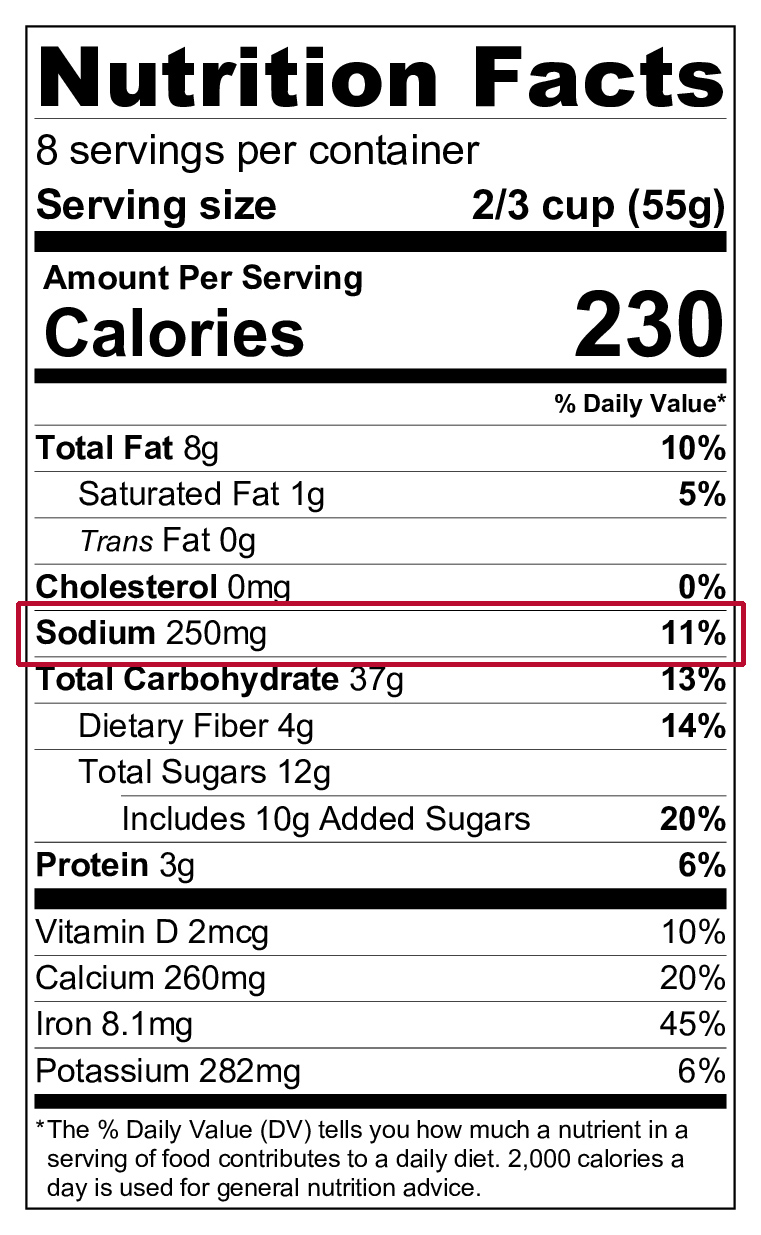Additional authors include Candace Tucker, MS, NDTR; and Hannah Wilson, PhD, RDN, LD.
The body needs sodium, but consuming too much over time can increase blood pressure. Having higher blood pressure increases your risk for heart attack, stroke, and kidney disease. For people with diabetes, high blood pressure can increase the risk of complications from diabetes.
The Dietary Guidelines for Americans recommend that all adults limit sodium to less than 2,300 milligrams (mg) per day. Some groups, such as older adults and people with high blood pressure, should aim for less than 1,500 mg daily. Talk to your doctor or dietitian for your individual recommendations.
Whether your goal is 2,300 mg or 1,500 mg, most Americans need to eat less salt. The average American consumes 3,400 mg of sodium per day. While some sodium exists naturally in foods and some is added during cooking at home, more than 70% of the sodium we eat is found in processed (packaged) and restaurant foods.
How to Reduce Your Sodium Intake

Nutrition labels are a useful tool to help you make informed decisions to decrease your sodium from processed foods. Look at the Nutrition Facts label on packaged foods and, more often than not, choose foods that are low in sodium. Here’s what to look for:
- Look at the total milligrams (mg) of sodium per serving.
- The recommended sodium intake is less than 2,300 mg per day.
- Look at the % Daily Value (% DV) of sodium per serving.
- Low sodium = less than 5% DV
- Moderate sodium = 6% to 19% DV
- High sodium = 20% or more DV
- Choose canned foods labeled “no salt added” or “low sodium.”
- Choose frozen foods without added sauces or seasonings.
What Do the Labels Mean?
On some processed foods, you will see nutrition claims like “no salt added” or “lightly salted.” See below to learn what this means.
| Term on the Label | What it means* |
|---|---|
| No Salt Added | No salt has been added during processing. |
| Low Sodium | There is less than 140 milligrams (mg) sodium per serving. |
| Reduced Sodium | At least 25% less sodium than the regular product. |
| Lightly Salted | At least 50% less sodium than the regular product. |
| *From “Sodium in Your Diet,” by the U.S. Food and Drug Administration, 2024 (https://www.fda.gov/food/nutrition-education-resources-materials/sodium-your-diet). | |
References
American Diabetes Association Professional Practice Committee. (2024). Facilitating positive health behaviors and well-being to improve health outcomes: Standards of care in diabetes. Diabetes Care, 47(Supplement_1), S77–S110. https://doi.org/10.2337/dc24-S005
Evert, A. B., Dennison, M., Gardner, C. D., Garvey, W. T., Lau, K. H. K., MacLeod, J., Mitri, J., Pereira, R. F., Rawlings, K., Robinson, S., Saslow, L., Uelmen, S., Urbanski, P. B., & Yancy Jr., W. S. (2019), Nutrition therapy for adults with diabetes or prediabetes: A consensus report. Diabetes Care, 42(5), 731–754. https://doi.org/10.2337/dci19-0014
U.S. Food and Drug Administration. (2024). Sodium in your diet: Use the nutrition facts label and reduce your intake. https://www.fda.gov/food/nutrition-education-resources-materials/sodium-your-diet









